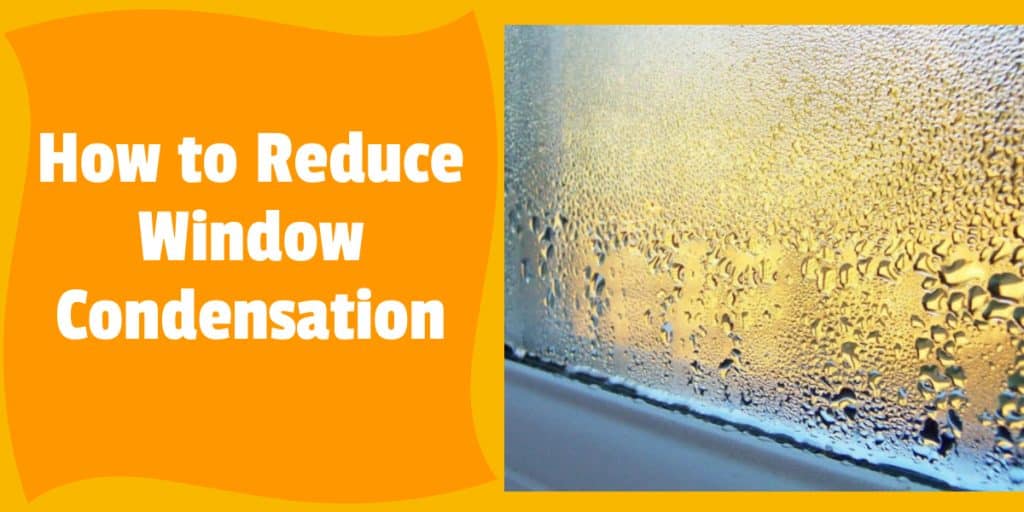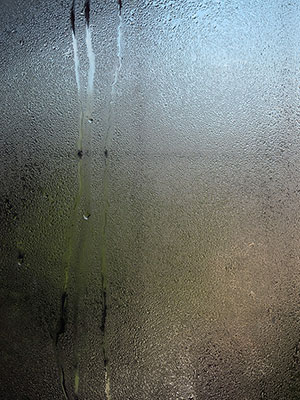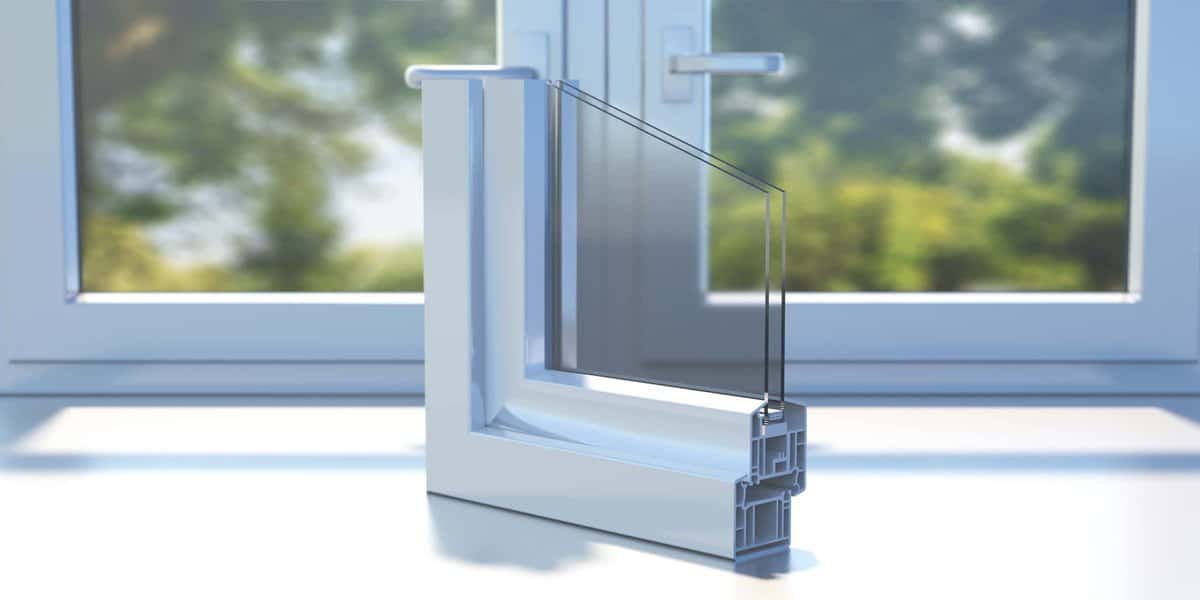
We occasionally get emails and phone calls from clients who are worried about condensation on their windows, especially during specific months of the year. In this piece, we examine condensation’s causes and treatments.
Contents
Windows Condensation: What is It?
The transformation of a vapour or gas into a liquid is called condensation. This occurs when the gas or vapour’s temperature drops below its “dew point.” This is what causes early-morning dew on the grass: on chilly nights, the earth releases heat upward; as a result, the ground’s temperature falls below that of the air, causing water vapour to condense on it as dew.

Because the air you breathe out is hotter than the air you breathe in, the water vapour condenses and appears as a mist, which is why you can observe when you breathe in cold weather.
Because air can store more water vapour at higher temperatures, hotter regions typically have higher levels of humid air. What results in window condensation?
We all appreciate fleeing to our warm, well-insulated houses during the cooler months. These contemporary conveniences are the primary cause of condensation on the windows in your home, even while they may help to keep out the cold.
Process of Condensation

When water vapour inside your home cannot escape, condensation develops. Water vapour accumulates in the air until it can no longer hold it and then liquefies on a cooler surface (often your windows). If you don’t do anything, what appears to be a fine mist on your windows will ultimately turn into forms water droplets.
More water vapour is released into the warm air in your home every time you boil a kettle, shower, use the tumble dryer, water your houseplants, or even just breathe.
Our rooms are warm with less ventilation since today’s houses are exceptionally insulated and energy efficient. As air was continually flowing and vaporized water was able to escape up the chimneys, via gaps in window frames, or under doors, drier homes in the past had significantly fewer condensation difficulties.
External Condensation
Condensation can occur on external surfaces as well. The best insulation for our houses has been made possible by the most recent glazing technology, however, this might result in exterior condensation.
Due to a combination of moist air conditions and the glass being at temperatures that are below the dew point, external condensation can build up on cold, crisp spring or fall days because the exterior pane of glass is never heated.
Why is Condensation on Windows a Problem?
While the immediate result of condensation (misty windows) might be dismissed as only an annoyance, if it isn’t addressed right once, it can result in more serious issues:
Mould

Black mould can develop in any region when condensation-induced dampness is left untreated. It can become a health danger in addition to being ugly and harming the surfaces it grows on.
According to the NHS, having respiratory issues, respiratory infections, allergies, or asthma is more likely if there is dampness and mould in your home. The immune system can also be impacted by dampness and mould. Additional details from the NHS.
Wall Damage

Walls near the troubled window may develop damp spots. This can taint paint and make wallpaper peel in addition to providing a haven for mold.
This humidity can soak down to the plastering causing it to crumble if not treated.
Destruction of Soft Furniture
The condensation-induced wetness can also harm drapes and other soft furnishings. They can develop mould and pick up the musty odour of the space.
External Condensation
Fortunately, since it is dried off by warming and/or airflow during the day, exterior condensation around your windows is unlikely to cause damage. As a result, neither the glass in your window nor the surroundings stay wet for a long enough period to pose any issues.
Are Certain Windows More Prone Than Others to Condense?
The layout of windows and the glazing for conservatories and orangeries is continually changing to produce ever-more energy-efficient options. This not only keeps your house warm but also lowers your carbon footprint and heating costs. This does not, however, always prevent condensation.
Windows With a Single Pane
Internal condensation is primarily caused by single-glazed windows. It won’t warm up with the temperature of the room because there is just one pane of glass, so it will seem almost as chilly as it does outside.
Double Glazing That is Less Energy-efficient

Ironically, condensation is less likely to happen with double-glazed units that weren’t built with energy efficiency in mind.
The heat of the room will warm the inside glass pane, making it less of a chilly surface for the water vapour to condense on. External condensation is also less probable since the less efficient insulation qualities mean that the exterior pane of glass is also going to be somewhat heated by the warmth exiting.
The trade-off, meanwhile, is a colder house or higher heating costs. Triple or double glazing that is energy-efficient.
The main cause of external condensation is the most modern energy-efficient glass.
The inside panel of the window is going to warm up with the room, reducing internal condensation, but the outer pane of glass won’t receive any of this warmth.
This means that when outdoor levels of humidity are high &/or the temperatures are extremely low, it will be colder and more likely to have external condensation.
How to Stop Windows From Condensing
Internal condensation must be avoided, and any issues must be resolved as soon as they arise. However, this does not entail giving up your house’s cosiness.
There are several techniques to lessen condensation, but the most important thing to keep in mind is MORE VENTILATION = LESS CONDENSATION!
Condensation Inside Windows
This is typically brought on by the absence of double or triple glazing, insufficient heating, and/or a closed door that prevents adequate airflow. The result is a buildup of water vapour in the space as well as windows that are sufficiently cold to draw it in.
Keep the Air in the Rooms Fresh

The apparent solution is to slightly open the windows or, if a trickle vent is installed, use it. Every day, contemplate opening one of the windows in each space to help the air circulate.
Check to see if appropriate ventilation has been provided if the room originally had a fireplace but this has subsequently been closed up. This typically entails installing wall ventilation or air bricks.
Pay particular attention to the ventilation in spaces where steam is produced, and if at all possible, have extractor fans installed in bathrooms. Use extraction hoods or cooktop extractors in kitchens to cope with cooking steam, especially if the space is open plan. You shouldn’t allow the moisture to spread and settle in living areas.
Close the door to the bathroom after taking a shower or bath and open your window to let the wet air leave the room rather than enter the other areas of your house.
A dehumidifier can assist in reducing excess moisture from the atmosphere if necessary, but this is less efficient than excellent ventilation. A dehumidifier can be especially useful in a conservatory or orangery during the winter.
Change Single Glazing Windows for Double Glazing

Condensation will certainly form on single-glazed windows during the colder months since the glass can’t warm up.
A window with double or triple glazing instead of single glazing will have an inside layer of glass that is insulated from the outside temperatures, allowing the room to warm up and preventing condensation. The air will be able to retain more moisture as a result of the room remaining warmer as a result.
Warm up Your House
Your home’s temperature can be slightly raised to encourage the air to retain moisture rather than condense. The rooms must still have adequate ventilation to let the water vapour out.
It can also be beneficial to install radiators beneath your windows because they keep the interior pane of glass heated and avoid condensation forms on it. The same holds for bathroom heated towel rails.
Don’t Forget About Vacant Rooms
If you shut the door and switch off the heater in a room you rarely use, condensation can grow into a significant problem.
Condensation will unavoidably happen since the glass is maintained a cold surface and the water vapour has nowhere to escape. Additionally, because you don’t frequent the area, harm may occur before you even realize it.
If you want to adjust the temperature in that room independently of the rest of the house, you could choose to install thermostatic radiator valves. If you decide to keep the heating on in that room.
Additionally, make sure the space is well-aired by opening a few windows or adding a dehumidifier.
External Condensation
There isn’t much you can do to stop condensation from occurring outside. Because of that window’s aspect and/or how protected it is, you’ll probably find that some windows have it worse than others. Additionally, it’s likely to pose a bigger issue in areas close to lakes or rivers where humidity would be naturally higher.
External condensation should only remain for a few hours in the morning until being dried by the sun’s warmth or the wind’s air movement.
Using specialized glass, like Pilkington’s ActivTM self-cleansing glass, will considerably reduce condensation in conservatories. The hydrophilic coating on this minimizes
Condensation Between the Window Glass
This shouldn’t happen with typical double or triple glazing because the unit ought to be sealed tightly to keep any water vapour out.
Therefore, if there is condensation in your window panes, the seal has failed, and the unit needs to be replaced.
Condensation can form in the cavity if secondary glazing is installed next to single-glazed windows because the unit won’t be hermetically sealed.



